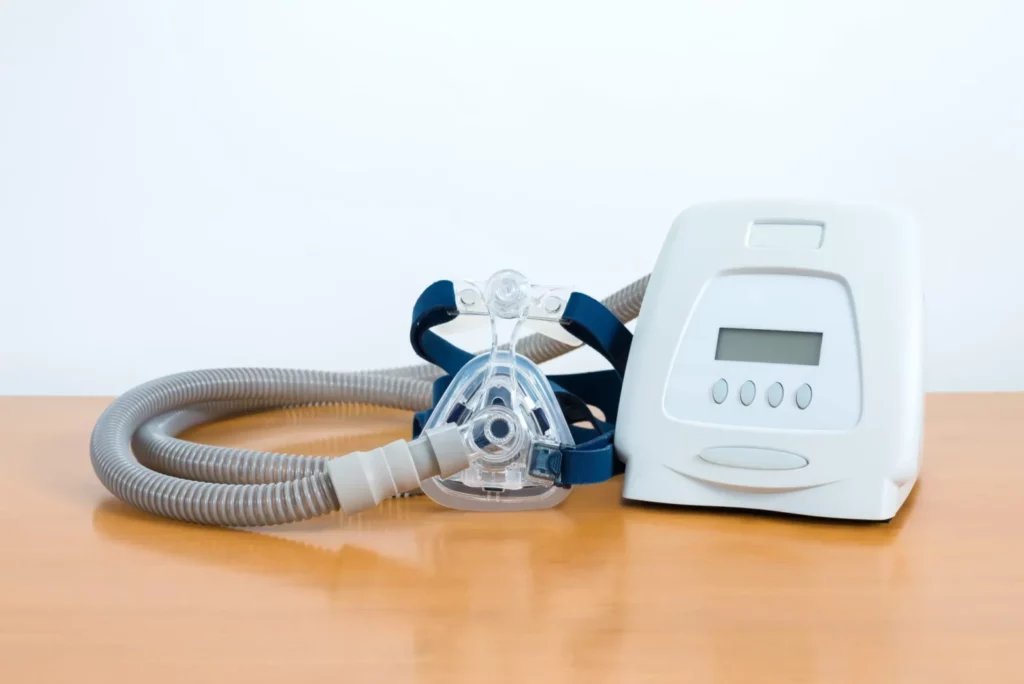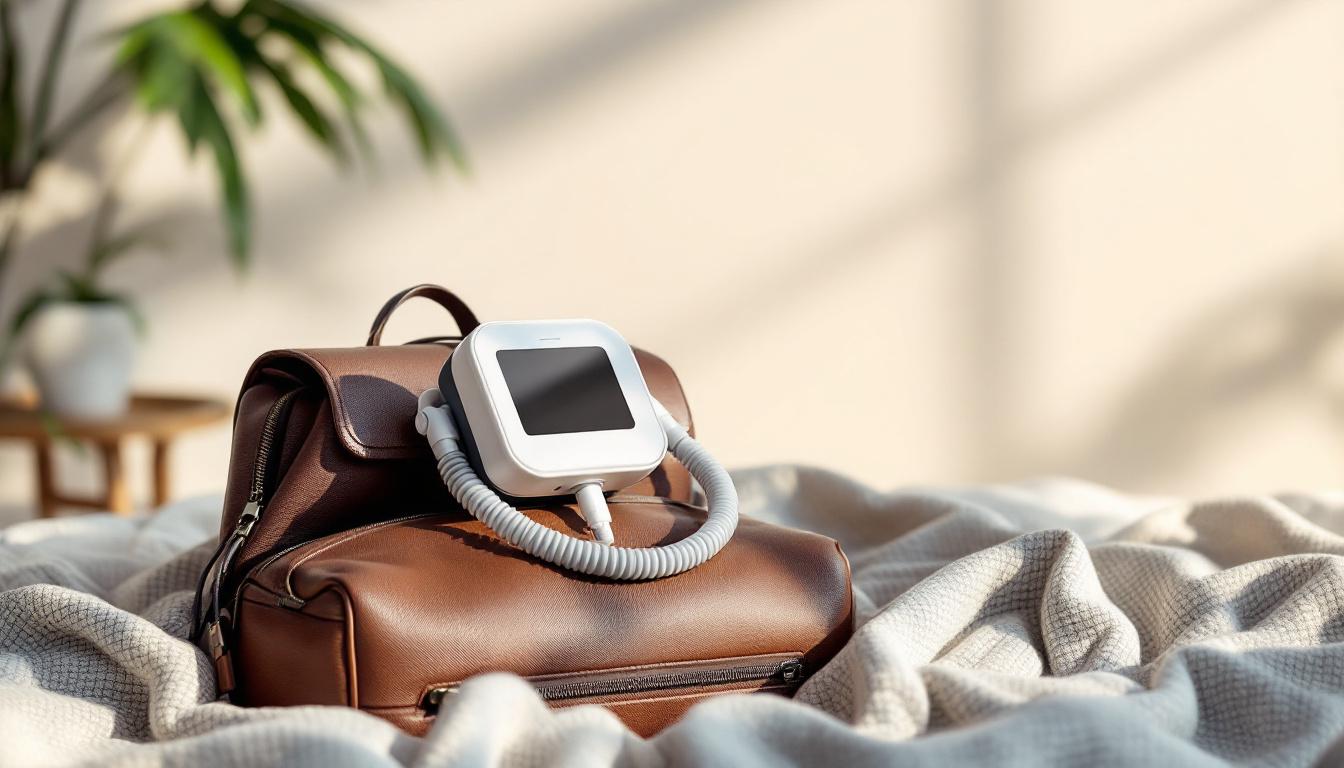Continuous Positive Airway Pressure (CPAP) machines have become essential devices for individuals suffering from obstructive sleep apnoea (OSA). These machines deliver a steady stream of air to keep the airways open during sleep, improving the quality of rest and overall health. With a variety of options available in the Australian market, it is crucial to understand the key features to consider when purchasing a CPAP machine. This guide will explore the most important features to look for, ensuring that you make an informed decision.
Understanding CPAP Technology
Before delving into the features of CPAP machines, it is important to understand how they work. CPAP machines use a motor to draw in air from the environment, which is then pressurised and delivered through a hose to a mask worn over the nose or mouth. This constant airflow prevents the airway from collapsing, thus reducing the frequency of apnoeic events during sleep.
Choosing the right CPAP machine Australia is a critical step in managing obstructive sleep apnoea effectively. By considering features such as pressure settings, noise levels, humidification options, comfort, portability, data tracking, and cost, individuals can make informed decisions that align with their needs and lifestyles.
Various CPAP machines are available, ranging from basic models to advanced devices with sophisticated features. The choice of machine can significantly impact comfort, usability, and effectiveness in treating sleep apnoea.

In addition to the basic functionality, many modern CPAP machines come equipped with advanced technology designed to enhance the user experience. For instance, some devices feature automatic pressure adjustment, which tailors the airflow to the user’s needs throughout the night, responding to changes in breathing patterns. This adaptability can lead to improved comfort and compliance, as users are less likely to feel overwhelmed by a constant high pressure. Furthermore, many machines now include integrated humidifiers to add moisture to the air, alleviating dryness and irritation in the airways, which is a common complaint among CPAP users.
Moreover, the integration of smart technology has revolutionised CPAP therapy. Many machines now offer connectivity features that allow users to track their sleep data via smartphone applications. This data can provide insights into sleep quality, including the number of apnoeic events and overall usage hours, empowering users to take a more active role in managing their condition. Some applications even offer tips for improving sleep hygiene and can alert healthcare providers if there are significant changes in the user’s condition, ensuring timely intervention when necessary.
Key Features to Consider
1. Pressure Settings
One of the primary features to consider is the pressure settings of the CPAP machine. Most machines offer a fixed pressure setting, while others provide automatic pressure adjustment based on the user’s needs throughout the night. This is known as Auto-CPAP or APAP (Automatic Positive Airway Pressure).
For those new to CPAP therapy, a machine with adjustable pressure settings may be beneficial. It can help in determining the optimal pressure required for effective treatment, enhancing comfort and compliance. Consulting with a healthcare professional can assist in identifying the appropriate pressure settings tailored to individual needs.
Learn more on: The Best CPAP Machine Brands Available in Australia
2. Noise Level
The noise level of a CPAP machine can significantly affect the quality of sleep, not only for the user but also for their partner. Most modern CPAP machines are designed to operate quietly, with noise levels measured in decibels (dB). A quieter machine, typically around 25 dB or lower, is preferable for creating a peaceful sleeping environment.
When evaluating noise levels, it is advisable to read user reviews and product specifications. Many manufacturers provide information on the operational noise levels of their devices, allowing potential buyers to make an informed choice.
3. Humidification Options
Dry air can cause discomfort, leading to issues such as nasal congestion and throat irritation. Therefore, many CPAP machines come with built-in humidifiers or the option to attach a separate humidification unit. This feature adds moisture to the air being delivered, making the therapy more comfortable. Read more about moisture on https://pubmed.ncbi.nlm.nih.gov/26599589/
There are two types of humidifiers: heated and passover. Heated humidifiers warm the water, providing a more effective moisture delivery, while passover humidifiers simply allow air to pass over a water chamber. The choice between the two often depends on personal preference and specific comfort needs.
Comfort and Fit
1. Mask Options
The type of mask used with a CPAP machine plays a crucial role in comfort and effectiveness. There are several types of masks available, including nasal masks, full-face masks, and nasal pillows. Each type has its pros and cons, and the choice often depends on individual preferences and sleeping positions.
Nasal masks are popular for their lightweight design and minimal coverage, while full-face masks are ideal for individuals who breathe through their mouths during sleep. Nasal pillows, on the other hand, provide a less intrusive option, resting at the entrance of the nostrils. Trying different masks can help users find the most comfortable fit.
2. Adjustable Features
Many CPAP machines come with adjustable features that enhance comfort. These may include adjustable headgear, which allows for a customised fit, and swivel connectors that enable freedom of movement during sleep. Some models also offer a ramp feature, which gradually increases the pressure to the prescribed level, allowing users to fall asleep more comfortably.
When considering adjustable features, it is essential to ensure that the machine can accommodate individual preferences for comfort and usability. A well-fitted mask and adjustable settings can significantly improve adherence to CPAP therapy.
Portability and Design
1. Size and Weight
For individuals who travel frequently, the size and weight of a CPAP machine can be a deciding factor. Many manufacturers offer compact and lightweight models designed specifically for portability. These machines often come with travel bags and power adapters suitable for international use.

When selecting a portable CPAP machine, it is advisable to consider the battery life and whether it can be used without a power source. Some models are equipped with rechargeable batteries, making them ideal for camping or long trips where power outlets may not be available.
2. User-Friendly Interface
A user-friendly interface can significantly enhance the experience of using a CPAP machine. Look for models with intuitive controls, clear displays, and easy navigation options. Some machines feature touch screens or smartphone connectivity, allowing users to monitor their therapy data and make adjustments easily.
Additionally, consider whether the machine has built-in reminders for maintenance, such as filter changes and cleaning schedules. A device that simplifies these tasks can contribute to better long-term adherence to therapy.
Data Tracking and Connectivity
1. Therapy Data Monitoring
Monitoring therapy data is essential for assessing the effectiveness of CPAP treatment. Many modern machines come equipped with data tracking capabilities, providing insights into usage hours, mask fit, and apnoea events. This information can be invaluable for both users and healthcare providers in evaluating treatment progress.
Some CPAP machines allow users to access their data via smartphone apps, making it easier to track progress and share information with healthcare professionals. This connectivity can foster a more proactive approach to managing sleep apnoea.
2. Compliance Features
Compliance with CPAP therapy is crucial for its effectiveness. Some machines have built-in compliance features that remind users to wear their masks and log their usage. These reminders can be beneficial for those who struggle with adherence, helping to reinforce the importance of consistent therapy. To learn more about adherence click here.
Additionally, some devices offer rewards programs or gamification elements to encourage users to maintain their therapy routine. These features can make the experience more engaging and motivate users to stick to their treatment plans.
Cost and Warranty Considerations
1. Budget and Affordability
The cost of CPAP machines can vary significantly based on features and technology. It is essential to establish a budget before beginning the search. While it may be tempting to opt for the cheapest option, investing in a quality machine with the necessary features can lead to better long-term outcomes.
Health insurance coverage for CPAP machines varies in Australia, so it is advisable to check with your provider regarding potential reimbursements. Some suppliers may also offer payment plans or financing options to make the purchase more manageable.
2. Warranty and Support
When purchasing a CPAP machine, consider the warranty and customer support offered by the manufacturer. A good warranty can provide peace of mind, covering repairs or replacements in case of defects. Additionally, reliable customer support can be invaluable for troubleshooting issues or obtaining replacement parts.
Before making a purchase, research the manufacturer’s reputation for customer service and warranty claims. Reading reviews and seeking recommendations from healthcare professionals can help ensure a positive experience.
Conclusion
Investing time in research and consulting with healthcare professionals can lead to a better understanding of the options available, ultimately improving adherence to therapy and enhancing overall sleep quality. With the right CPAP machine, users can look forward to restful nights and improved health outcomes.
